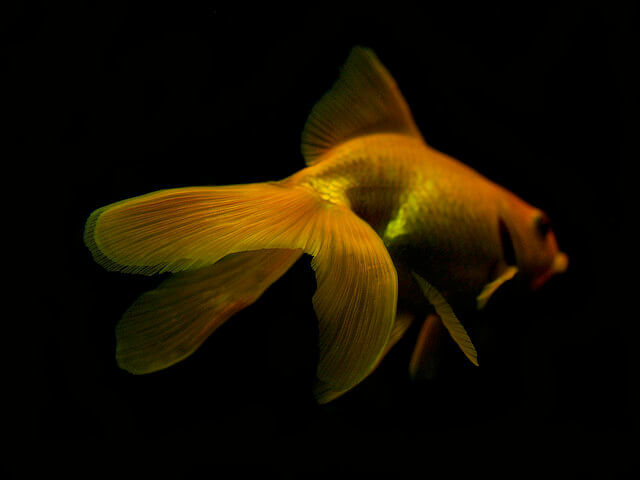The veiltail goldfish is a beloved and sought-after variety among goldfish collectors and enthusiasts. Known for its graceful and flowing caudal tail, the veiltail exhibits unique characteristics that make it a prized addition to any aquarium.

Distinctive Physical Features
- The most notable feature of the veiltail goldfish is its long, paired caudal tail, which gives it an elegant and flowing appearance. When viewed from above, the caudal tail fins should be completely divided, without any forked or pointed tips.
- In addition to the caudal tail, the dorsal fin of the veiltail should not fold over or sag but instead sway gracefully like a flag in the wind. The pectoral and pelvic fins should be long and narrow, contributing to the overall beauty of this goldfish variety.
Color Varieties
- Veiltail goldfish can exhibit a range of colors and patterns, including metallic self-colors (solid), variegated (multiple colors), and calico. The colors should be vibrant and extend into the fins, enhancing the visual appeal of the fish.
Veiltail Care Tips
Here are some key details about the veiltail goldfish and its care requirements:
Tank Size and Environment
- Veiltail goldfish require ample swimming space due to their flowing fins. Provide a spacious tank that allows for their graceful movements. A minimum tank size of 20 gallons is recommended for a single veiltail goldfish, but larger tanks are preferable for optimal comfort.
- Incorporate decorations, rocks, and plants (live or artificial) in the tank to create a visually appealing environment and provide hiding spots for your veiltail goldfish. Ensure that any decorations or plants do not have sharp edges that may damage their delicate fins.
- Maintain a secure lid on the tank to prevent potential jumps or escapes, as veiltail goldfish are known to be active swimmers.
Water Quality
- Clean and well-maintained water is vital for the health of your veiltail goldfish. Regularly test the water parameters, including ammonia, nitrite, nitrate, and pH levels, to ensure they remain within appropriate ranges for goldfish.
- Perform regular water changes of 20-30% every 1-2 weeks to remove accumulated toxins and maintain optimal water conditions. Adjust the frequency and volume of water changes based on the tank size, stocking level, and water quality parameters.
- Utilize a reliable filtration system that provides mechanical, biological, and chemical filtration to keep the water clean and clear. Choose a filter appropriate for the tank size and ensure proper maintenance of the filter media.
Feeding
- Offer a balanced diet to meet the nutritional needs of your veiltail goldfish. Feed them a high-quality goldfish pellet or flake food as the primary diet. Look for a food specifically formulated for fancy goldfish, which often have a higher protein content and contain ingredients to enhance coloration.
- Supplement their diet with occasional treats of live or frozen foods, such as brine shrimp, bloodworms, daphnia, or tubifex worms. These foods provide variety and additional nutrients.
- Avoid overfeeding your veiltail goldfish, as they have a propensity for overeating. Feed them small portions multiple times a day, ensuring they consume their food within a few minutes.
Tank Mates
- Veiltail goldfish are generally peaceful and can coexist with other goldfish breeds. However, it’s essential to choose tank mates with similar swimming abilities and avoid aggressive or fast-swimming breeds that may outcompete or nip at their delicate fins.
- Ensure that tank mates have similar requirements in terms of water temperature and quality. Compatible goldfish breeds include other fancy varieties like oranda, ryukin, or ranchu.
Observation and Health Care
- Regularly observe your veiltail goldfish for any signs of illness, distress, or changes in behavior. Look for abnormalities such as loss of appetite, lethargy, abnormal swimming patterns, or physical abnormalities.
- Maintain a suitable water temperature range of 68-74°F (20-23°C) to provide a comfortable environment for your veiltail goldfish.
- If you notice any signs of illness or disease, promptly isolate the affected fish and seek advice from a knowledgeable aquatic veterinarian or fish expert.
Reviewed By: Tim Winter

Tim Winter has a strong affection for pets and wildlife. His years of experience caring for various types of pets has led him to share his knowledge with others on the best practices in pet care. Tim holds a Bachelor of Science from the University of Oregon School of Journalism and Communications.
